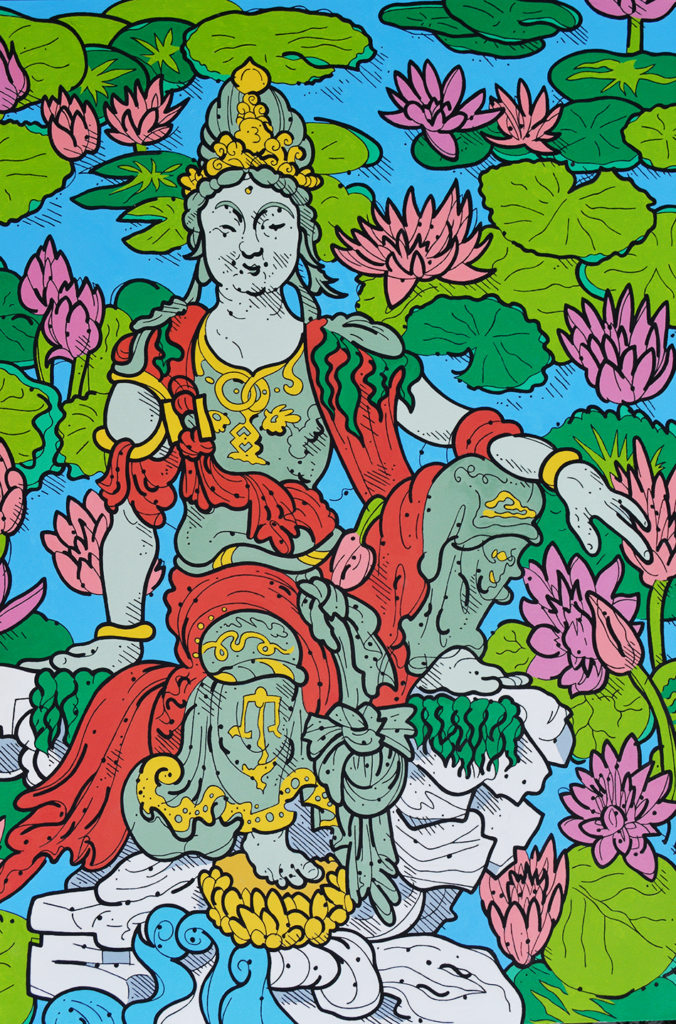 Title: Tara
Title: Tara
Material: Oil on canvas
Size: 48×36
Year: 2020 SOLD
I’ll always have Tara. –Scarlett O’Hara
I’ll always have Tara.
It’s true confession time, and true confessions are always better than fake confessions. Those occur during plea deals on court house steps. But the truth is, the model for this painting was Guanyin, the bodhissattva of compassion, and not Tara, also the bodhisattva of compassion, as well as the mother of liberation, the savior of the suffering, and the sovereign potentate of action – which begins to sound like a ring announcer’s superlatives before a no-holds-barred ring match, which may be necessary for us to determine which of the two is the real bodhisattva of compassion. So, Tara, here, is actually Guanyin in greenface.
The Chinese statue that informed this painting has been a part of the collection of the Museum of Fine Arts in Boston, New York (Take that, Sox fans!) since 1920. It is thousand years old, and is carved from paulownia wood. I reversed the image because this was a commission, and, in it’s intended location, I wanted the subject to be gesturing away from a wall and down the hall towards the peace and comfort of the client’s bed chamber.
The difference between a buddha and a bodhisattva is a buddha has attained enlightenment, whereas a bodhisattva foregoes her/his quest for the same until the rest of us achieves ours. How’s that for selflessness? So the bodhisattva’s m.o. is to help us to shed our layers of attachments, ignorance and anger, to ultimately become awakened. The challenge then is to stay awakened, and all the coffee in Sumatra can’t help you there. Sumatra’s only 2% Buddhist anyhow.